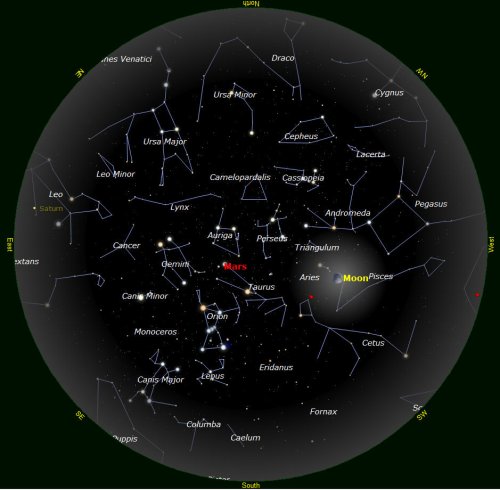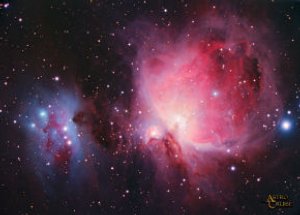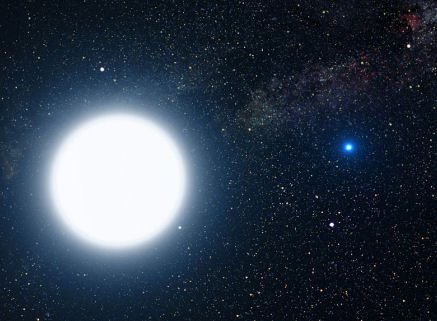
LAKE COUNTY – If you hear dogs barking on a cold January night, they just might be two hunting dogs alerting their master, Orion, to the presence of a rabbit.
But we’re getting ahead of our story. Let’s start at the beginning.
In January, the winter skies are dominated by what may be the most beautiful of all constellations, Orion the Hunter.
Look at our January star chart – Orion is below Mars, which is now fading from its December brightness as it begins to move away from the earth.
Orion is framed by four bright stars that represent his shoulders and feet. There are three stars in a line in the middle of Orion – they represent his belt.
In Greek mythology, Orion was a great hunter who boasted he would eventually kill all of the wild animals on earth.
This boast angered Gaia, the earth goddess, so she sent a scorpion named Scorpius to kill Orion. Scorpius was successful, stinging Orion on the heel.
To commemorate the Orion versus Scorpius main event, both were placed in the night sky. To prevent them from fighting, Orion was placed in the winter sky, while Scorpius was placed in the summer sky.
Below Orion’s belt is a magnificent object that can be seen through a telescope – it’s called The Great Orion nebula, and it looks like the picture below.

The Orion nebula is a huge cloud of dust and gas. New stars are born here, and we sometimes refer to this object as being a star nursery. Through a telescope of any size it is beautiful to behold.
Every great hunter should have some hunting dogs. Orion is no exception. Look at the star chart and locate Canis Major and Canis Minor. Those names are Latin for “Big Dog” and “Little Dog.” Canis Major has the brightest star in the sky, Sirius.
Sirius is sometimes called the “Dog Star,” for obvious reasons. In addition to being the brightest star, Sirius is also a double star. A tiny star rotates around Sirius like our planets rotate around the sun. This star is called “The Pup.”
The following photograph shows the Dog Star and Pup.

We mentioned the two dogs barking at a rabbit. That would be Lepus the Hare on our star chart. Lepus is a faint constellation originally cataloged by the ancient Greek mathematician-astronomer, Ptolemy.
On our star chart, you will note the bright full moon will light up the night sky on Jan. 15.
Keep that in mind, because in February we’ll talk about the eclipse of the moon that will happen at the end of that month.
For more information about astronomy and local astronomy-related events, visit the Taylor Observatory Web site at www.taylorobservatory.org.
On Jan. 12, starting at 8 p.m., the observatory will be open to the public. The life cycle of stars will be the featured topic.
John Zimmerman has been an amateur astronomer for 50 years. He is a member of the Taylor Observatory staff, where, among his many duties, he helps create planetarium shows.
{mos_sb_discuss:2}

 How to resolve AdBlock issue?
How to resolve AdBlock issue? 





